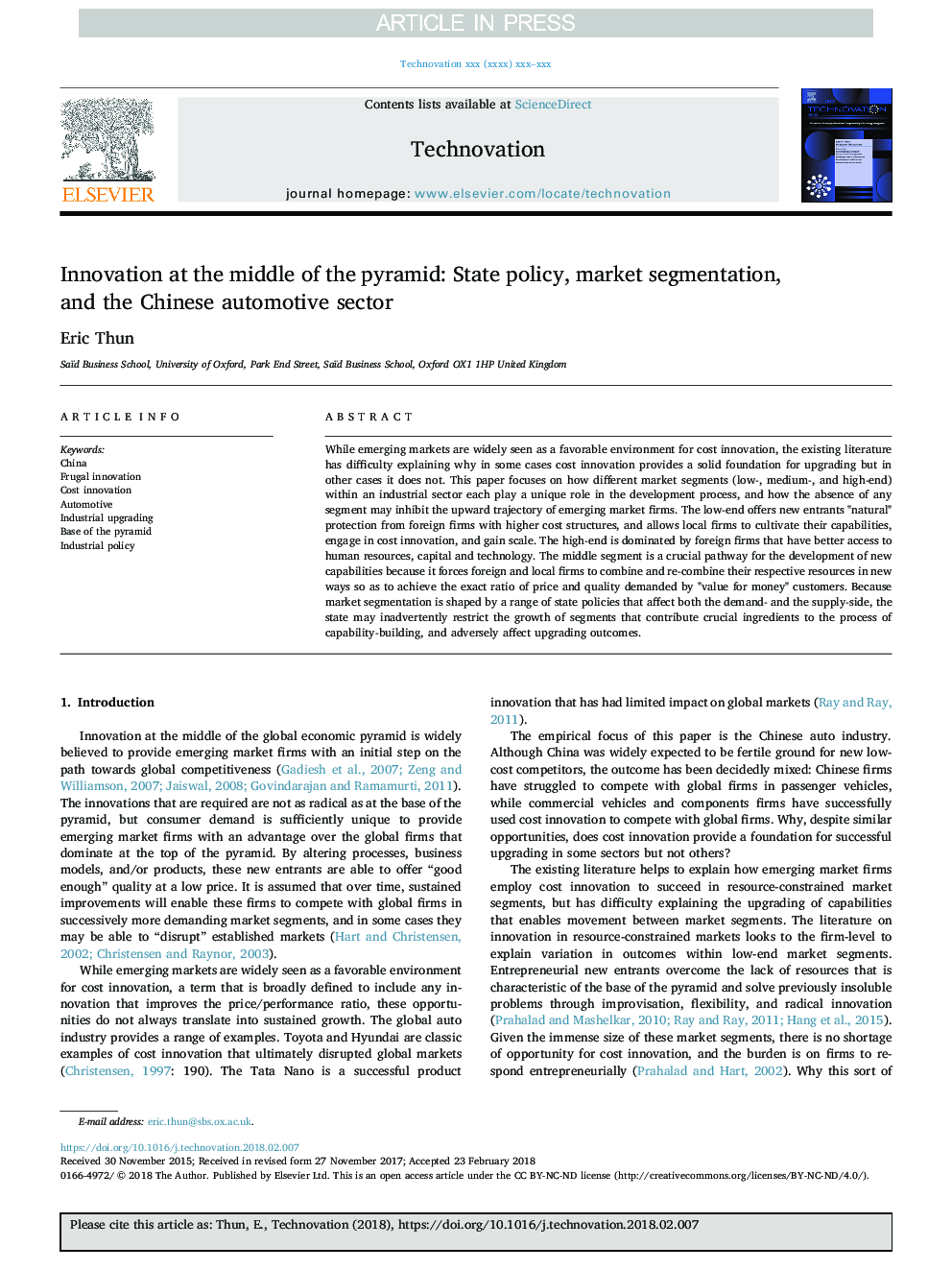| Article ID | Journal | Published Year | Pages | File Type |
|---|---|---|---|---|
| 7427052 | Technovation | 2018 | 13 Pages |
Abstract
While emerging markets are widely seen as a favorable environment for cost innovation, the existing literature has difficulty explaining why in some cases cost innovation provides a solid foundation for upgrading but in other cases it does not. This paper focuses on how different market segments (low-, medium-, and high-end) within an industrial sector each play a unique role in the development process, and how the absence of any segment may inhibit the upward trajectory of emerging market firms. The low-end offers new entrants "natural" protection from foreign firms with higher cost structures, and allows local firms to cultivate their capabilities, engage in cost innovation, and gain scale. The high-end is dominated by foreign firms that have better access to human resources, capital and technology. The middle segment is a crucial pathway for the development of new capabilities because it forces foreign and local firms to combine and re-combine their respective resources in new ways so as to achieve the exact ratio of price and quality demanded by "value for money" customers. Because market segmentation is shaped by a range of state policies that affect both the demand- and the supply-side, the state may inadvertently restrict the growth of segments that contribute crucial ingredients to the process of capability-building, and adversely affect upgrading outcomes.
Related Topics
Social Sciences and Humanities
Business, Management and Accounting
Business and International Management
Authors
Eric Thun,
